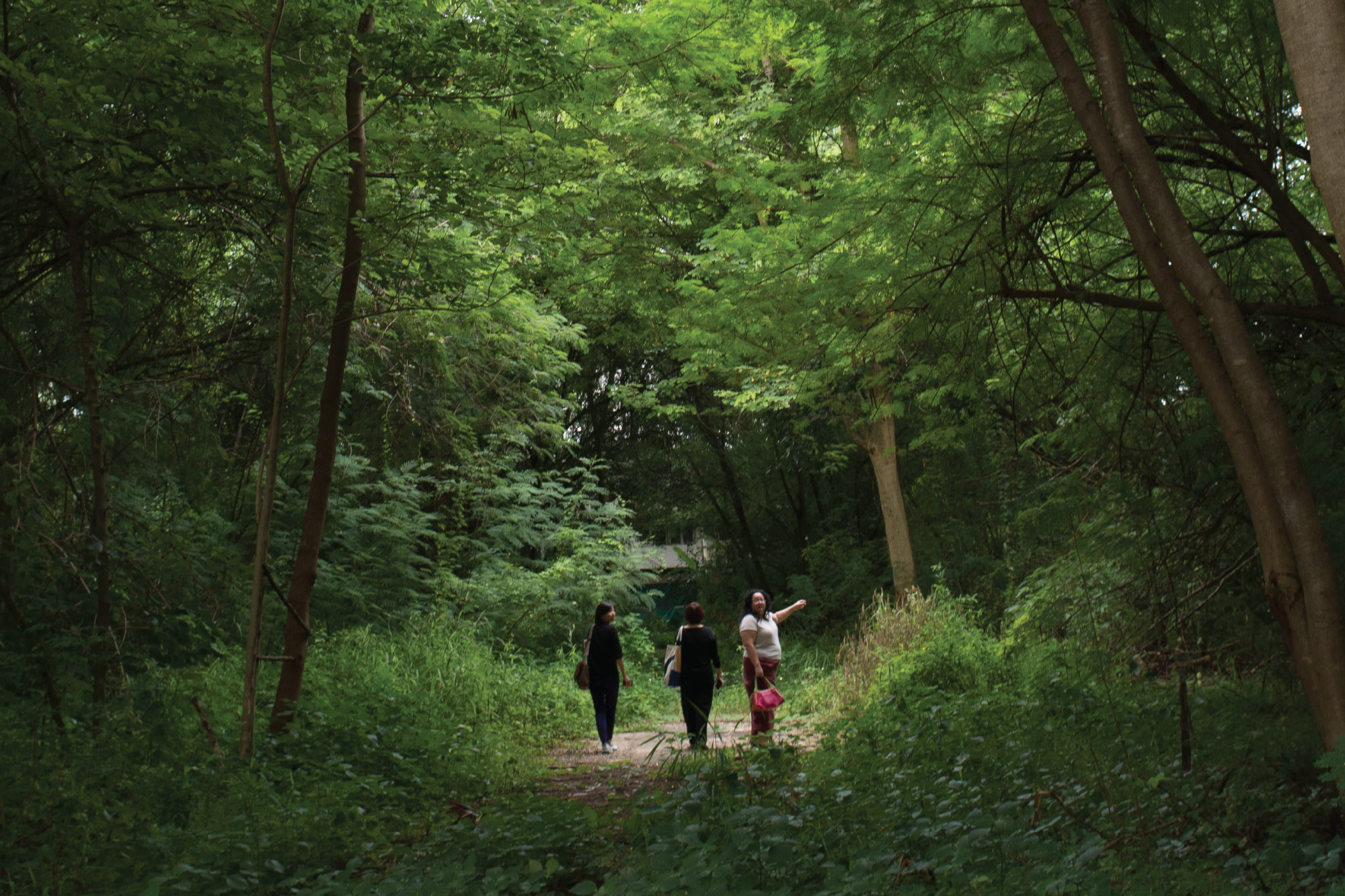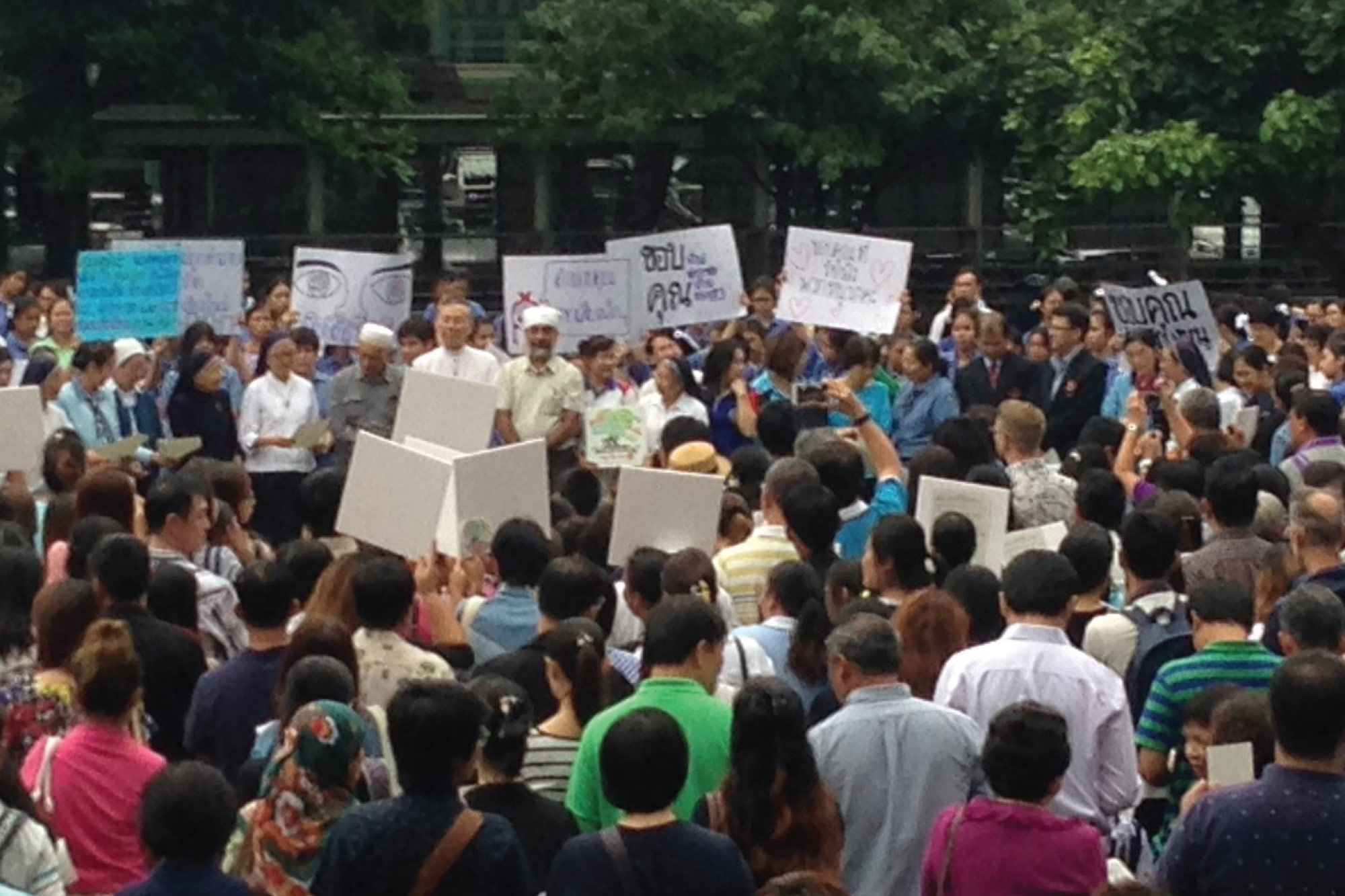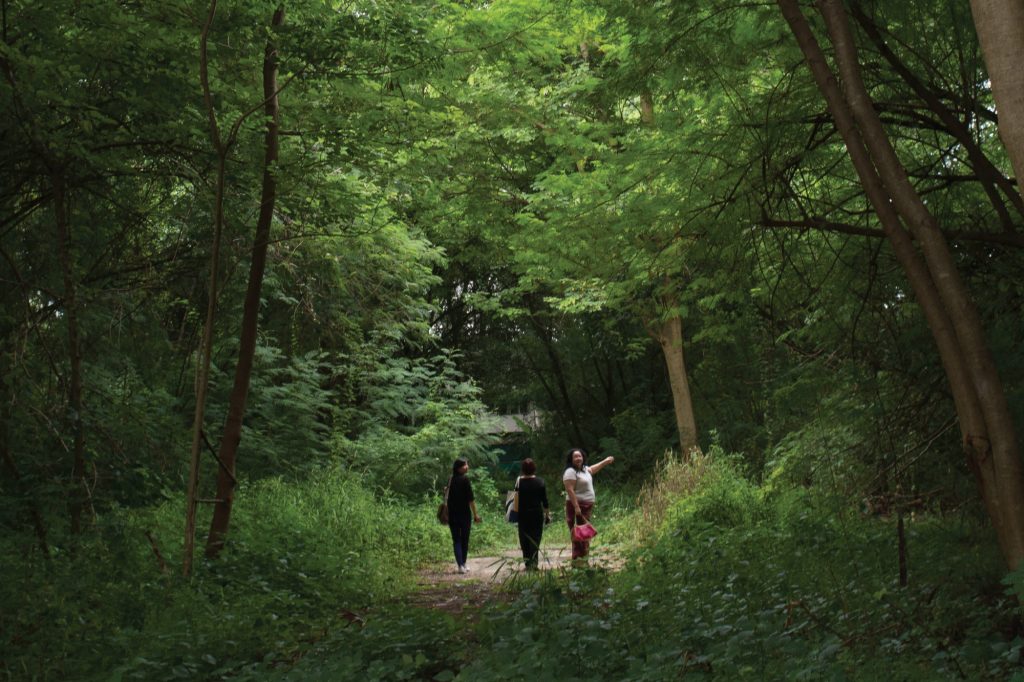It was a year ago, nearly to the day, when over one thousand people came together on the lawn of Regina Coeli School, holding hands and singing songs in protest. Led by an imam, a bishop, nuns, monks, a Sikh giani ji and other community leaders, they had gathered to object the proposed construction of a 900 unit condominium project which would have caused mass congestion in what was already the city’s most congested area during rush hour. What began a couple of weeks before as one catholic girls school’s efforts to halt a mammoth construction project next door had grown into a protest covered by both local and national press and supported by 23 communities in the Chang Klan Sub-District as well as countless more people and organisations across the city.

Citylife featured this story on our cover in September of last year, telling of the valiant efforts made by the community and its supporters as well as gleefully announcing just before going to press that the Treasury Department had, due to pressure, agreed to end its contract with developers. We did, however, caution that the land was still in jeopardy of being developed, as the Treasury Department had made no promises as to their future intentions. The land is extremely valuable to the department which is one of the more lucrative arms of the government, owning over 561,000 buildings on 12.5 million rai of land throughout Thailand to lease or sell whenever there is need for cash.
The park was to be used by the community, would contain as many trees as possible and would be designed to be actively used.
This time last year we wrote that a Green City Council Facebook page had been created by protest leaders reaching out to members of the public asking them to weigh in on the future of this prime piece of land. 81.2% of the 4,987 people who responded in the online survey said that the land should be turned into a community park and learning centre, most of the households surrounding the park as well as neighbouring schools and other local stakeholders agreed. The park was to be well used by the local community and would be designed to be as little of a burden to authorities as possible in terms of cost as well as care.
The 1st Green City Council was held in early September 2016 with 52 members including 19 consultants drawn from all relevant sectors of society — government, local, school and religious representatives, members of the media, academia and private sectors. All findings and minutes of each subsequent meeting were shared on the Facebook page as well as being official matters of public record. The agreed goal following the first meeting was confirmed; the park was to be used by the community, would contain as many trees as possible and would be designed to be actively used.

A few weeks later in mid-September, witnessed by the Chiang Mai Provincial Office, the Municipality, the Royal Forest Learning Centre and the Royal Forest Department, the Director of the Treasury Department Jakkrit Paraphuntakul officially handed over the land to the citizens of Chiang Mai. Governor of Chiang Mai Pawin Chamniprasart, who had been very supportive to the community throughout the process, stepped up as president of the committee and allocated the budget for the construction. Because the land is zoned ‘blue’ by city planners, it can only be held under a public agency and the municipality took official ownership of the property as per the council’s request.
In October the committee announced the start of the open competition for the community park’s design. Twenty three candidates from all over Thailand submitted their designs. A panel of esteemed architects, including national artist Dr. Chulathat Kitibutr and Dr. Nakorn Pongnoi, Director of Mae Fah Luang Art & Cultural Park, met to choose the winning design. The top three designs were awarded 10,000 baht each and one firm even won four return international tickets donated by AirAsia following a popular online vote. The committee decided on the design submitted by a Chiang Rai firm, Plang Guy, awarding them a further 10,000 baht for winning the contest. It was noted that it was their interesting use of spaces at varying heights as well as their novel proposal to create a sky walk to link the park to Chang Klan Road, which hopefully would encourage school children to take a healthy walk through the park before being picked up afterschool, as two of the main reasons for winning the bid. In February this year the committee met again to ask Plang Guy to develop the winning design further in order to conform with government planning rules and regulations. The final plans were submitted and made available to the public on 11th August of this year.
Regina Coeli, Montfort and Sacred Heart each donated 30,000 baht and soon bank statements were published showing that over half a million baht was raised.
The budget for Phase I of the park was requested of the provincial government by the Provincial Office of Natural Resources and Environment, securing 14 million baht for the initial stage of development. In accordance with government rules, this money was not to be spent on design, only on construction, so the two women representing Regina Coeli School from the onset, alumnae Kemakorn Chaiprasit and Plai-auw Thongsawat, began fundraising efforts. Three schools in the vicinity — Regina Coeli, Montfort and Sacred Heart each donated 30,000 baht and soon bank statements were published showing that over half a million baht was raised. Plang Guy cut their fee to a mere 2% of the design cost and were paid 280,000 baht from this fund for the implementation of their design. They also offered the Phase II of the design to the committee for no extra fee. Once the design was approved it entered the normal government system of e-bidding, and MD Idea won the bid, a construction firm with experience in park construction including Royal Flora Rajaphruek, beginning construction this September. The first phase will be completed within nine months of its inception. Phase two is projected to cost around 12 million and will be complete by the end of 2019.
“Phase I is all about infrastructure,” said Associate Dean of the Faculty of Business and Administration, Chiang Mai University Kemakorn, one of the two women who have been the force behind all efforts over the past year. “We wanted to use solar lights to reduce future costs, but the area has too much shade for that, so we are using LED lights. We will also pave the walkways, but for now will use concrete. There will be many areas for exercise and activities for the children and the community, as per popular demand, hence the lawns and open spaces. We aim to make sure that children can come here for day camps and have activities in a safe and secure environment. There is only parking for ten cars at the narrow entrance, because we don’t want to take away from green spaces, but the Forestry Department next door has offered use of their car park and has also agreed to link their public spaces to ours to turn them into educational centres. We will also be using some of this budget to lay the foundation for our sky walk. Basically most of the cost will go into levelling or building up the land and laying infrastructure.”
“Some may say that we have rushed this process somewhat, but following the firing of the previous director of the Treasury Department and the appointment of an unknown-to-us new director, we all agreed that it would be best to tie everything down before there was any chance of him changing his mind.”
“Our intentions are that at least 50% of the park is green,” said Jiraporn Meewasana of the National Parks, Wildlife and Plants Conservation Department.
“We don’t want to be a burden on the local government since this was really a community effort, so we will soon sit down with the schools and ask them to perhaps share responsibility for maintaining the park,” continued Kemakorn. “For over twenty years people have been trying to do something with this piece of land, some of the efforts made by some of the biggest businesses in the country a decade or so ago, when they tried — and failed — to get the zoning to change to ‘red’ to allow for commerce. So we must really never take it lightly that out of all those effort through all those years, it was our collective effort that finally secured it for future generations. If people want to get involved or offer opinions they are welcome to, but they also must realise that no one owns this, this is collective, so you will only get your voice heard if you are part of the process. The good news is that the PR last year was so loud and far reaching that everyone had access to knowledge of what was about to happen and the opportunity to join in.”
“Our intentions are that at least 50% of the park is green,” said Jiraporn Meewasana of the National Parks, Wildlife and Plants Conservation Department (Chiang Mai Office) and official advisor to the Green City Council. “The running tracks, playgrounds and activities areas should eventually become merely supplementary under the shades of the trees. The problem I see now with a few recent protesters [on social media] is that they don’t realise that nearly all the trees on the land are kratin yak which are invasive alien species which should be eliminated, however large they are. It all looks lovely and green now, but these trees get brittle in the dry months and can cause many accidents so they are absolutely not right for children to play under. They also spread their canopies rapidly, starving local plants of light and food. We have already set aside a budget to plant indigenous trees which will cost less to maintain and care for as well as be educational for future generations. The local plants tend to be stronger and more resilient. So yes, we will be cutting down a lot of trees, but we are looking long term with what we will plant. Why were [these people] not complaining when their big condos and hotels were being built?”
Over the past year, extraordinary ideas and activities have been born from this collective.
From first protest to the recent construction bid, the efforts made on behalf of this slice of green can be used for future models of conservation. It was the coming together of people who selflessly gave of their time, money, connections and expertise to further a shared cause. It was the successful rallying of public support through the media and social media that pressured the Treasury Department to hand over the land. It was the pooling of resources and expertise and finally the understanding of how to convince a government department to work against their self-interest, which has secured this plot of land for future generations. After all, the official government evaluation of the land set the price tag at 468 million baht — though the sale value is always far greater.
Over the past year, extraordinary ideas and activities have been born from this collective. A national artist held a workshop, taking children to the park and teaching them about painting and drawing nature. Budding journalists wrote articles, produced footage and helped raise awareness about the land, spreading the word amongst the youth. An exhibition of the 23 submitted designs was open to the public with lectures on green design and other value-added activities. A normally apathetic public had, and took, the chance to get involved and know that their voices were heard and listened to.
The yet unnamed park is months from opening, but it is already serving its goal as a space to bring together the community and to educate. Suggested park names so far include that of Princess Soamsawali, who was also a student at Regina, though there is talk about letting the public compete for a name — let’s hope it’s not Parky McParkface!
“What I have learnt over the past year,” ended Kemakorn, “is that Chiang Mai people have great power. They also know right from wrong and have integrity. Our citizens see the importance of the greater good and are willing and able to fight for it; this is clear. The sheer number of people, experts and influencers in their various fields, who have contributed their knowledge, time and efforts without need for face or recognition has been humbling. It is all about the community as a whole, and I think that is a lesson thousands of us have learnt from this experience.”
Related Article:
Breathing Space: How one abandoned piece of land has brought the city together
